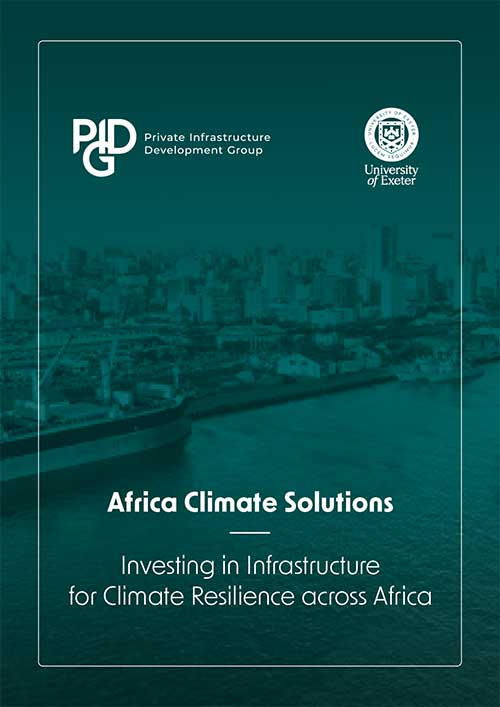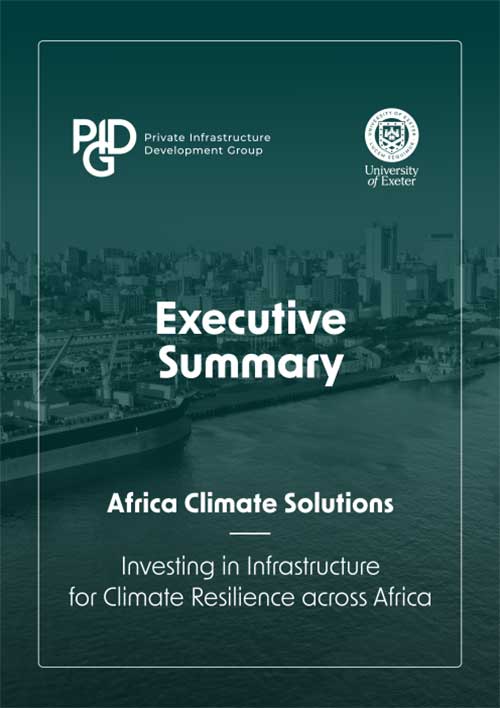Africa Climate Solutions: Investing in infrastructure for climate resilience across Africa
Traditionally, financiers and developers have focused on risks to infrastructure such as transport, water and energy systems when considering climate resilience (being able to cope with threats such as extreme heat and storms). However, this new report, launched at COP28 says investments in Africa’s infrastructure can make people and communities far more resilient to the threats posed by climate change. Produced by the Private Infrastructure Development Group (PIDG) and the University of Exeter, the report calls for an expanded focus. Specifically, it says financiers and developers should consider how infrastructure can most effectively contribute to the resilience of the communities and economies it serves – especially those most vulnerable to climate extremes.
The report outlines the varying climate threats facing different African regions. While much of the continent will experience increasing heat stress, some areas will be particularly prone to droughts (e.g. North Africa, Southern Africa and areas of the Sahara), while others are more likely to experience heavy rainfall and flooding (e.g. East Africa, Central and West Africa), and others may be hit by both (e.g. Madagascar). Coastal flooding and wildfires are also likely to increase in some areas.
Given these growing threats, the report urges investors to gain a better understanding of which vulnerabilities need to be addressed, and therefore which kinds of investment can be the most powerful in building resilience.
Climate resilience and sustainable development can be mutually beneficial and considered together, the report has found that they can trigger processes of change that widen and accelerate – going beyond incremental change to transform lives and ensure African economies continue to develop and grow in the face of climate hazards.
The report highlights nature-based “green infrastructure” solutions, which have huge potential in some settings given their effectiveness in delivering resilience, adaptation and development – while being typically cheaper than conventional hard infrastructure solutions. Infrastructure can drive climate-resilience and development through providing direct adaptation or resilience benefits that protect from climate hazards; through driving economic development that underpins people’s capacity and resources to adapt; and through contributing to macro-economic resilience by facilitating trade or reducing dependence on imports.






